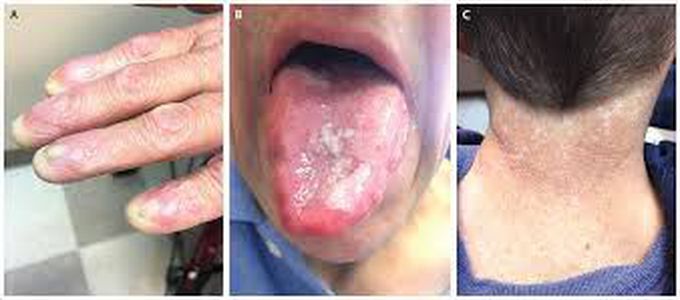


Causes of dyskeratosis congenita
Dyskeratosis congenita can be caused by changes (mutations) in the genes. About 50% of the people who have dyskeratosis congenita have changes in the DKC1, TERT, TERC or TINF2 genes. In rare instances, other genes can cause the condition. These genes provide the body with instructions on how to make telomeres. Telomeres are structures on the ends of chromosomes that prevent the chromosomes from fraying or breaking down. Changes in these genes cause the telomeres to get shorter and shorter. As the telomeres shrink, they cannot protect the chromosomes. The chromosomes can break or become unstable. This has the biggest impact on cells that divide often and quickly. In some cases, people with dyskeratosis congenita do not have a known genetic change. The DKC1 gene is an X-linked recessive change. The definition of "X-linked recessive" is a gene located on the X chromosome. The X chromosome is one of two sex chromosomes. Because males have one X chromosome and one Y chromosome, a genetic change in their X chromosome is enough for them to have dyskeratosis congenita. Females have two X chromosomes, so changes would need to happen in both X chromosomes to have dyskeratosis congenita. This is very rare, which means most females with the change are just carriers. Males are much more likely to have the X-linked recessive change for dyskeratosis congenita. Some people have autosomal recessive genetic change. "Autosomal" refers to a change that happens in the non-sex chromosomes. "Recessive" means that a child inherits two copies of the mutated gene with one coming from each parent. A child who has an autosomal recessive change suggests that the parents are both carriers of the change. There is a 25% chance that their child will have the condition if both parents are carriers. It is also possible to have dyskeratosis congenita from autosomal dominant genetic changes. "Dominant" indicates that a child only needs one copy of the changed gene to have the condition. The copy can come from either parent in this type of inheritance pattern. A child who inherits an autosomal dominant change would only need one of the parents to have the genetic change. When only one parent has the change, there is a 50% chance that their child will have dyskeratosis congenita

